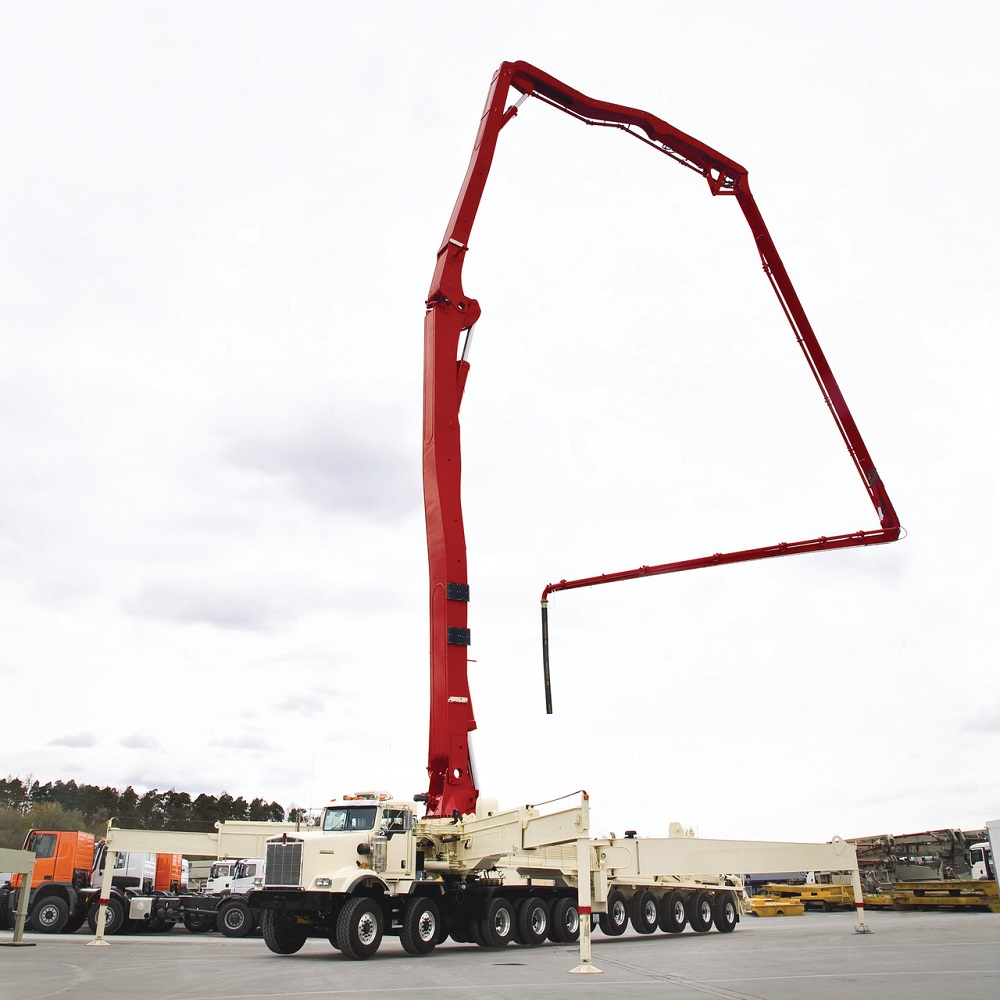BLOG
Concrete Pumping 101
by admin on June 11, 2019

How to Pump Concrete to Those Hard-to-Reach Places with a Reliable & Efficient Concrete Pump Truck
When it comes to construction projects, it’s important to emphasize efficiency to ensure you stay within the boundaries of your budget and timeline. Specialized machines like concrete pumps work to help you maximize your time.
Versatile concrete pumping services save you valuable time and effort, allowing you to pour concrete in even the hardest-to-reach locations.
Here’s everything you need to know about concrete pumping and why you should skip the wheelbarrow.
What Is A Concrete Pump?
A concrete pump is a time-, cost-, and back-saving machine that moves wet concrete to places where concrete mixer trucks cannot reach. There are two main types of concrete pumps—boom pumps and line pumps.
Both of these pumps can reach over, under, high up, deep down below, and far away from the concrete mixer trucks to pour concrete quickly and accurately.
How Do Concrete Pumps Work?
A concrete pump is controlled by a skilled concrete pump operator. The pump operator controls the operation, position, and output of the pump by directing the boom or hose. The operator is also in charge of driving the pump to the job site, setting up the pump, cleaning the pump after use, and making any necessary repairs.
Boom Pumps
A boom pump uses a remote-controlled robotic arm (boom) attached to a truck or a semi-trailer to place large volumes of concrete with accuracy. The truck typically remains in one place for the entire pour as ready-mix trucks can unload concrete directly into the pump’s hopper.
The hopper has an auger to churn the concrete and keep it liquid, along with a mesh grate to prevent large rocks and chunks from clogging the pump.
The stationary central location of the truck on the job site allows for a more efficient traffic flow.
Line Pumps
A line pump (also known as a ground pump) is a trailer-mounted concrete pump or a truck-mounted pump that uses a series of steel or rubber hoses to lead and place concrete wherever it needs to go. And a concrete truck will also unload the concrete into the pump’s hopper.
Both types of pumps use twin cylinder hydraulic pumps. One piston draws the liquid concrete from a hopper and into a cylinder while at the same time, the other piston pushes concrete out into the discharge pipes.
A valve determines which piston is open to the concrete hopper and which is open to the discharge pipes by switching over each time the pistons reach the end of the cylinders. This valve mechanism allows each cylinder to alternate between drawing concrete and pushing concrete, pumping higher volumes of concrete and saving time.
However, for a concrete pump to work, the concrete mix must be suitable for pumping. The concrete must have enough water for the mix to move easily through the pump and hoses. Otherwise, it can risk clogging the pump lines.
Purpose & Types Of Projects Concrete Pumps Are Used For
The main purpose of concrete pumps is to save time, money, and energy during a concrete project, large or small. Instead of hauling concrete to the desired location, a pump allows you to place concrete precisely where you need it, no matter the obstacles that are in the way of reaching the area with a truck.
Due to the high volume of concrete pumped with boom pumps, boom pumps are best for large construction projects, such as large industrial projects and high-rise buildings.
Small line pumps transport smaller volumes of concrete, so they are ideal for smaller concrete construction projects, such as pools, sidewalks, ground slabs, low-rise construction, and slabs for single-family homes.
Line pumps can also be used for grout, mortar, wet screeds, shotcrete, sludge, and foamed concrete. And they are ideal for repairing underwater concrete, placing concrete in heavily reinforced sections, filling fabric forms, and building bond beams.
However, larger line pumps can be used for tunneling work and high-rise construction, reaching hundreds of metres or kilometres away from the truck.
Benefits Of Concrete Pumps
Here are some of the many benefits of using concrete pumps for your next construction project.
Quick, Quality Placement of Concrete
Concrete pumps can pump large volumes of concrete as quickly as a truck mixer can discharge the concrete. Many pumps can pump 30 to 100 cubic metres of concrete per hour. And this quick, precise placement method also ensures a quality pour.
The setup time for concrete pumps is also very fast—arriving on site and pumping concrete within the hour.
Wider Reach
The hose or boom of concrete pumps can place concrete precisely in hard-to-reach areas, such high up into high rises, into enclosed buildings, over fences, and down steep slopes.
How far can a concrete pump truck reach? The vertical reach of a typical boom pump is 41.9 metres (137 feet). And the horizontal reach is 38 metres (124.7 feet). However, longer booms can reach more than 200 feet.
Lower Labour Costs
Concrete placement with pumps requires less concrete contractors to distribute the concrete. A concrete pump operator will accurately place the concrete using the boom or hose instead of relying on multiple workers to move back and forth to place concrete. And the continuous flow of the concrete means no time is wasted.
With handy concrete pumps, productivity increases and projects can be completed on time and within budget, making concrete pumping a cost-effective placement method for concrete projects large and small.
Say goodbye to wheelbarrows and consider a concrete pump rental from your local concrete suppliers to save time, costs, and energy on your next concrete project.
